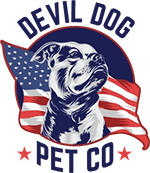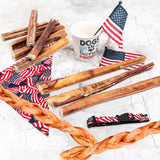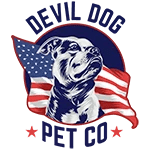Choosing the right dog for apartment living isn't just about size—it's about finding a four-legged teammate who thrives in close quarters without driving you or your neighbors to the breaking point. Good apartment dogs share specific traits that make them exceptional companions for urban living: they're adaptable, relatively quiet, and content with indoor activities supplemented by regular walks.
Key Takeaways
- Good apartment dogs usually have moderate to low energy levels and minimal barking tendencies.
- Adaptable temperaments are essential for dogs living comfortably in close quarters.
- Breed size is less important than the dog's ability to thrive indoors and enjoy regular walks.
- Popular apartment dogs include Cavalier King Charles Spaniels, French Bulldogs, Pugs, and some larger breeds like Greyhounds.
- Successful apartment dogs are content with indoor activities and do not disturb neighbors.
Table of Contents
The reality? Apartment living presents unique challenges that can make or break the human-dog relationship. Limited space, shared walls with neighbors, and restricted outdoor access demand careful breed selection and committed leadership. Get it wrong, and you're looking at noise complaints, destructive behavior, and potentially having to rehome your dog—a heartbreaking outcome we're determined to help you avoid. For more insights, check out this AKC guide to the best dogs for apartment dwellers.
This guide cuts through the fluff to deliver the unfiltered truth about apartment-friendly breeds, the critical factors you must consider, and proven strategies for success. Whether you're eyeing a tiny Maltese or considering whether a Great Dane could actually work in your studio, we'll arm you with the intel you need to make the right call.
Understanding Apartment Living and Dog Ownership
Let's get real about what apartment dog ownership actually entails. This isn't about cramming any dog into a small space and hoping for the best—it's about strategic breed selection and disciplined ownership that sets both you and your dog up for success.
Challenges of Apartment Living for Dogs
Apartment living throws curveballs that suburban dog owners never face. Limited indoor space means your dog can't burn energy with spontaneous zoomies across a backyard. Instead, they're confined to your living room, bedroom, and maybe a narrow hallway if you're lucky.
- No immediate yard access: Every bathroom break requires leashing up and heading outside, regardless of weather or your schedule
- Noise amplification: Barking, running, and play sounds carry through thin walls, floors, and ceilings to neighbors who didn't sign up for your dog's soundtrack
- Enclosed environment intensification: Shedding, dander, and odors concentrate in smaller spaces, making grooming and cleanliness non-negotiable
- Restricted exercise options: No backyard fetch means creativity in meeting exercise needs through walks, stairs, and indoor activities
The Importance of Choosing the Right Breed
Here's where most people get it wrong: they pick a dog based on looks, impulse, or what worked for their friend's suburban setup. Great dogs for apartments share specific characteristics that make them naturally suited for compact living, and ignoring these traits is setting yourself up for failure.
- Energy compatibility: Matching the dog's activity needs to your space and schedule limitations
- Noise discipline: Selecting breeds with naturally lower barking tendencies or high trainability for quiet commands
- Space efficiency: Choosing dogs that can rest comfortably and move safely in confined areas
- Neighbor compatibility: Prioritizing breeds known for calm, non-aggressive temperaments in shared spaces
- Maintenance reality: Factoring grooming needs, shedding levels, and allergy considerations into your decision
The stakes are higher in apartments. A dog that's "just okay" in a house with a yard can become destructive, anxious, or disruptive when confined to 800 square feet. The best dogs for apartment living aren't just tolerating the space—they're genuinely content and well-adjusted in it.
Extreme Dog Leadership Insight: The right breed for your apartment isn't about what you want—it's about what will thrive in your specific environment. Your job as a leader is to make that match based on facts, not feelings.
Key Factors to Consider When Selecting an Apartment Dog

Selecting the best apt dog requires evaluating five critical factors that directly impact success in confined living spaces. Skip any of these considerations, and you're gambling with your dog's wellbeing and your neighbors' patience.
Size and Space Requirements
Size matters, but not the way most people think. A 15-pound Jack Russell Terrier can cause more apartment chaos than a 70-pound Greyhound if their energy levels and space needs don't match your setup. If you're considering a breed in the 5-25 lbs range or a slightly larger companion in the 20-45 lbs range, make sure to match their temperament and energy to your living situation.
- Small breeds (under 25 lbs): Generally well-suited, but verify energy levels and exercise needs
- Medium breeds (25-60 lbs): Can thrive if low to moderate energy and well-trained
- Large breeds (60+ lbs): Possible for specific low-energy breeds like Greyhounds, Great Danes, or Bulldogs
The key isn't just physical size—it's how much space the dog needs to feel comfortable and secure. Some great danes in apartments actually work because these gentle giants are content lounging most of the day, while a small Border Collie might pace and stress in the same space due to unmet mental stimulation needs.
Energy Levels and Exercise Needs
Energy level is the make-or-break factor for apartment success. High-energy breeds that need 2+ hours of vigorous daily exercise will struggle in apartments unless you're committed to multiple daily walks, dog park visits, and creative indoor enrichment. For dogs that need extra stimulation, consider providing long lasting dog chews to keep them occupied indoors.
| Energy Level | Daily Exercise Needs | Apartment Suitability |
|---|---|---|
| Low Energy | 30-45 minutes walking | Excellent apartment candidates |
| Moderate Energy | 60-90 minutes mixed activity | Good with committed owner |
| High Energy | 2+ hours vigorous exercise | Challenging, requires dedication |
Barking and Noise Levels
Nothing kills apartment harmony faster than excessive barking. Apartment dogs need to understand when quiet time is non-negotiable, and some breeds are naturally better at this than others.
- Naturally Quiet Breeds: Basenji, Greyhound, Cavalier King Charles Spaniel, French Bulldog
- Trainable for Quiet: Poodles, Golden Retrievers, Labs (with consistent training)
- Challenge Breeds: Terriers, Beagles, most herding breeds (bred to be vocal)
- Apartment Risk: Breeds with strong guarding instincts that bark at every hallway sound
Shedding and Grooming Needs
In apartments, every shed hair is magnified. You're not just dealing with dog hair on furniture—you're managing it in a confined space where it affects air quality, cleanliness, and potentially your lease agreement if you're dealing with allergies or strict cleaning requirements. For tips on keeping your dog's coat in check, see our guide on trimming your dog's nails quickly and safely.
- Poodles (all sizes) - hypoallergenic and minimal shedding
- Bichon Frise - fluffy but contained shedding
- Maltese - long coat but minimal loose hair
- Portuguese Water Dog - curly coat traps loose hair
Temperament and Trainability
Apartment living demands dogs that are adaptable, calm under pressure, and responsive to training. Your dog will encounter strangers in elevators, hear constant noise from neighbors, and need to navigate tight spaces with grace.
Essential temperament traits for apartment success:
- Adaptability
- Ability to adjust to new sounds, smells, and situations without stress or reactive behavior
- Social neutrality
- Calm, non-aggressive response to strangers in hallways, elevators, and shared spaces
- Impulse control
- Capacity to remain calm when excited, such as when visitors arrive or when hearing other dogs
- Training responsiveness
- Willingness to learn and follow commands, especially "quiet," "place," and "leave it"
- Adaptability: Comfortable with routine changes and new environments
- Low reactivity: Doesn't startle or become aggressive with sudden noises or strangers
- Social confidence: Handles elevator rides, hallway encounters, and close-quarters living
- Training responsiveness: Learns and retains commands quickly, especially "quiet" and "place" commands
The best dog for apartment living combines trainability with natural calmness. Breeds that were developed as companions rather than working dogs often excel here—they're bred to read human cues and adapt to their owner's lifestyle rather than follow strong independent drives.
Top Apartment-Friendly Dog Breeds
These breeds have proven track records in apartment settings, combining the right mix of size, temperament, and adaptability. Each brings specific advantages to compact living situations. For more breed ideas, see this external list of the best apartment dogs.
Small to Medium Breeds Ideal for Apartments
Bichon Frise - The Cheerful Apartment Champion
The Bichon Frise ranks among the best dogs for apartments thanks to their naturally happy disposition and minimal shedding. These 12-18 pound companions were bred to be lap dogs for French nobility, making them perfectly suited for indoor living.
- Hypoallergenic coat with minimal shedding
- Naturally low barking tendency
- Adaptable to owner's energy level
- Excellent with children and strangers
- Moderate exercise needs (30-45 minutes daily)
Cavalier King Charles Spaniel - The Gentle Apartment Companion
These 13-18 pound spaniels excel in apartments due to their calm, people-focused nature. Originally bred as companion dogs for British royalty, they're naturally attuned to human schedules and indoor living.
- Exceptionally social and friendly temperament
- Moderate shedding with regular brushing
- Low to moderate barking
- Adaptable exercise needs
- Excellent elevator and hallway manners
Maltese - The Devoted Apartment Companion
At 4-7 pounds, the Maltese is built for apartment living but brings surprising personality. These ancient companion dogs form intense bonds with their owners and thrive in close-quarters relationships.
- Minimal shedding with silky, non-allergenic coat
- Low exercise requirements
- Naturally quiet indoors
- Excellent lap dog qualities
- Long lifespan (12-15 years)
Pug - The Adaptable Apartment Buddy
Pugs bring the perfect apartment personality: friendly, adaptable, and naturally low-energy. These 14-18 pound companions are content with moderate exercise and excel at reading their owner's mood and schedule. For a rewarding treat, try bully sticks as a safe, long-lasting chew for your pug or other small apartment dogs.
- Naturally calm and friendly disposition
- Low barking tendency
- Excellent with children and strangers
- Moderate shedding but manageable
- Heat-sensitive, so indoor living is actually preferred
French Bulldog - The Urban Apartment Star
French Bulldogs have become the ultimate city dog for good reason. These 20-28 pound companions combine apartment-perfect traits: minimal exercise needs, low barking, and natural contentment with indoor living.
- Very low barking and noise levels
- Minimal grooming requirements
- Heat-sensitive, so apartments are ideal
- Excellent with urban environments
- Moderate shedding
Surprising Large Breed Apartment Champions
Greyhound - The Gentle Giant Apartment Surprise
Despite their racing background, retired Greyhounds are among the best dogs for apartment living. These 60-70 pound athletes are famous for being "40-mile-per-hour couch potatoes." If you want to reward your Greyhound or other large breed, consider elk antlers for a durable, satisfying chew.
- Extremely low energy indoors
- Naturally quiet and gentle
- Minimal shedding and grooming needs
- Content with 30-45 minutes daily exercise
- Excellent apartment manners
Great Dane - The Surprising Apartment Gentle Giant
Great Danes in apartments work better than most people expect. These 100-175 pound gentle giants are naturally calm, low-energy dogs that are content lounging most of the day.
- Low energy - content with 30-60 minutes daily walks
- Naturally quiet and gentle temperament
- Short coat with moderate shedding
- Excellent with strangers and children
- Space-efficient when lying down
Bulldog - The Low-Energy Apartment Perfect Match
English Bulldogs bring ideal apartment traits: low energy, minimal exercise needs, and natural contentment with indoor living. These 40-50 pound companions are heat-sensitive, making air-conditioned apartments their preferred environment.
- Very low energy and exercise requirements
- Naturally calm and friendly
- Heat-sensitive, so indoor living is preferred
- Minimal barking
- Excellent with children and strangers
| Breed | Size | Energy Level | Barking Level | Apartment Rating |
|---|---|---|---|---|
| Bichon Frise | 12-18 lbs | Low-Moderate | Low | Excellent |
| French Bulldog | 20-28 lbs | Low | Very Low | Excellent |
| Cavalier King Charles | 13-18 lbs | Moderate | Low | Excellent |
| Greyhound | 60-70 lbs | Low | Very Low | Excellent |
| Great Dane | 100-175 lbs | Low | Low | Good |
| Corgi | 25-30 lbs | High | Moderate | Challenging |
Strategies for Apartment Dog Success

Selecting the right breed is only half the battle. Successful apartment dog ownership requires specific strategies that address the unique challenges of compact living while maximizing your dog's wellbeing and your neighbors' peace.
Managing Exercise and Mental Stimulation in Small Spaces
Even the best dogs for apartment living need structured exercise and mental engagement. The key is maximizing limited space and creating consistent routines that meet your dog's needs without overwhelming your schedule. For a healthy, boredom-busting treat, try antler dog chews or Himalayan dog yak chews to keep your apartment dog happily occupied.
- Stair climbing: 5-10 minutes of controlled stair work equals 20-30 minutes of walking
- Puzzle feeders: Turn mealtime into 15-20 minutes of mental work
- Hallway fetch: Use soft toys for controlled indoor retrieval games
- Training sessions: 5-minute skill-building sessions provide mental stimulation
- Interactive toys: Rotate puzzle toys weekly to maintain engagement
The most successful apartment dogs have owners who establish non-negotiable daily routines. This means morning walks happen regardless of weather, and evening mental stimulation occurs even after long work days.
Controlling Barking and Noise
Noise management can make or break apartment dog ownership. Even naturally quiet breeds need training for apartment-specific situations like hallway encounters, delivery sounds, and neighbor noise. For more on safe, healthy chews that can help with boredom barking, see our post on bully sticks for dogs and their safety.
Extreme Dog Leadership Approach: Teach a "quiet" command before problems start. Use positive reinforcement when your dog naturally stops barking, then add the verbal cue. Practice during calm moments, not during barking episodes.
- "Quiet" or "Enough": Stops barking on command
- "Place" or "Settle": Goes to designated spot and stays calm
- "Leave it": Ignores hallway sounds and neighbor activity
- "Wait": Prevents door rushing and elevator excitement
Grooming and Allergy Management
Confined spaces amplify grooming needs. What might be manageable shedding in a house becomes overwhelming in a 700-square-foot apartment. Successful apartment owners stay ahead of grooming rather than reacting to problems.
- Daily brushing: 5 minutes prevents hours of cleanup
- Weekly vacuuming: High-powered pet vacuum for furniture and carpets
- Air purification: HEPA filters reduce dander and allergens
- Bathing frequency: Over-bathing can increase shedding and skin issues
For condo dogs and apartment living, invest in quality grooming tools upfront. A good slicker brush, deshedding tool, and powerful vacuum save money and stress long-term.
Building Good Neighbor Relations
Your dog's reputation in the building directly impacts your lease renewal and daily stress levels. Proactive neighbor management prevents conflicts before they escalate to landlord complaints or building restrictions.
- Elevator protocol: Keep dogs in "sit" position, avoid crowding other passengers
- Hallway manners: No sniffing under doors or marking in common areas
- Noise hours: Respect quiet hours (typically 10 PM - 7 AM) for training and play
- Waste management: Always carry cleanup bags, even for indoor accidents in hallways
- Introduction courtesy: Briefly introduce well-behaved dogs to interested neighbors
The most successful apartment dogs have owners who address concerns immediately. If a neighbor mentions barking, acknowledge it and share your action plan. This transparency builds goodwill and prevents escalation.
Maximizing Small Spaces for Dog Comfort
Smart space planning makes apartments feel larger for both you and your dog. The goal is creating distinct zones that serve multiple functions while maintaining your dog's comfort and routine.
- Vertical storage: Wall-mounted food stations and toy storage free floor space
- Multi-purpose furniture: Ottoman storage for toys, bench seating with built-in dog beds
- Designated zones: Clear eating, sleeping, and play areas prevent confusion
- Over-organization: Too many barriers can make small spaces feel cramped
Emergency Planning and Backup Care
Apartment living requires more detailed emergency planning than house ownership. You can't simply open a door to let your dog outside during emergencies, and building evacuations require specific protocols.
Establish relationships with nearby dog owners for backup care. Apartment buildings naturally create communities—leverage these connections for mutual pet-sitting during emergencies, work delays, or travel.
Advanced Breed Selection for Apartment Success
Beyond the obvious factors of size and energy, successful apartment dog selection requires understanding subtle breed characteristics that only become apparent in confined living situations.
Temperature Regulation and Climate Control
Apartment dogs face unique temperature challenges. Unlike houses with multiple climate zones, apartments typically maintain consistent temperatures, which can stress breeds with specific climate needs.
- French Bulldogs: Prefer consistent 68-72°F temperatures
- Pugs: Struggle with temperature fluctuations
- Bulldogs: Need climate-controlled environments
- Great Danes: Surprisingly heat-sensitive despite size
These temperature-sensitive breeds actually thrive in apartments because consistent climate control prevents the respiratory stress they experience in houses with varying temperatures throughout different rooms.
Sound Sensitivity and Urban Adaptation
Urban apartments expose dogs to constant low-level noise: traffic, neighbors, building systems, and street activity. Breeds with high sound sensitivity can develop chronic stress in these environments.
Sound-Resilient Apartment Champions: Bulldogs, Pugs, and Cavalier King Charles Spaniels were bred in urban environments and naturally filter background noise. Herding breeds like Corgis remain alert to every sound, making apartment living more stressful.
Social Drive and Human Dependency
Apartment living creates intense human-dog relationships due to shared space and limited social outlets. Some breeds thrive with this closeness; others become overwhelmed or develop separation anxiety.
| High Social Drive (Apartment Ideal) | Moderate Social Drive | Independent (May Struggle) |
|---|---|---|
| Maltese | French Bulldog | Basenji |
| Cavalier King Charles | Pug | Shiba Inu |
| Bichon Frise | Boston Terrier | Chow Chow |
| Havanese | Greyhound | Afghan Hound |
Long-Term Lifestyle Integration

The most successful apartment dog owners think beyond the puppy phase and plan for how their dog's needs will evolve within apartment constraints over 10-15 years.
Planning for Senior Dog Needs
Senior dogs face unique challenges in apartments: difficulty with stairs, increased bathroom frequency, and potential mobility issues. Planning ahead prevents crisis situations and maintains quality of life.
- Elevator dependency: Ensure backup plans for elevator outages
- Bathroom access: Senior dogs may need more frequent outdoor trips
- Mobility aids: Ramps, orthopedic beds, and non-slip surfaces become essential
- Veterinary access: Urban vets often provide house calls for mobility-limited seniors
Financial Planning for Apartment Dog Ownership
Apartment dog ownership often costs more than suburban ownership due to service dependencies and space limitations.
- Dog walking services: $15-25 per walk, $300-600 monthly for daily service
- Doggy daycare: $30-60 daily for high-energy breeds
- Professional grooming: More frequent due to confined shedding
- Pet deposits/fees: $200-500 deposits plus $25-75 monthly pet rent
- Emergency boarding: Urban rates $50-100 nightly
Budget $2,000-4,000 annually for apartment-specific dog expenses beyond basic care, food, and veterinary costs.
Building Your Apartment Dog Community
Successful apartment dog owners create support networks within their buildings and neighborhoods. This community becomes essential for emergency care, socialization, and shared resources. For more lifestyle tips and inspiration, browse The Devil Dog Blog for expert advice and real-world stories.
Making the Right Choice for Your Apartment
The best dogs for apartment living aren't just small, quiet breeds—they're dogs whose natural temperament, energy levels, and social needs align with confined living and urban environments. Success comes from honest assessment of your lifestyle, careful breed selection, and proactive management of apartment-specific challenges.
Whether
Download the FREE 10-Step Dog Prep Guide
Frequently Asked Questions
What's the best dog for an apartment?
The best dog for an apartment is one with moderate energy, good adaptability, and manageable size. Dogs that adjust well to confined spaces and don’t require hours of daily exercise fit the bill. Your dog Dexter has taught me that mental stimulation and consistent leadership matter more than breed or size—so pick a dog whose energy level matches your lifestyle and commit to daily enrichment and training.
What type of dog can be left alone during the day?
Dogs that tolerate alone time best are those with lower separation anxiety and a calm temperament. Adult dogs with established routines and plenty of mental and physical exercise before you leave handle solo hours better. Training your dog Dexter to stay calm and occupied with chews or puzzles before you head out sets the foundation—no dog should be left alone without proper preparation and leadership.
Which is the most low maintenance dog?
Low maintenance dogs generally have short coats, moderate energy, and minimal grooming needs. But ‘low maintenance’ doesn’t mean no maintenance—every dog, including Dexter, requires daily attention, leadership, and mental engagement. The key is choosing a dog whose needs align with your available time and energy, then owning that responsibility fully.
What is the easiest dog to take care of in an apartment?
The easiest dog to care for in an apartment is one that thrives on structure, is not easily bored, and responds well to leadership. Consistent routines for potty, exercise, and training keep apartment life smooth. Dexter’s success comes from clear boundaries and daily enrichment—apply the same principles, regardless of dog size or breed, and apartment living becomes manageable.
What is the calmest house pet?
Calmest house pets tend to be adult dogs with mellow personalities, well-trained and mentally satisfied. A calm dog like Dexter who’s exercised and mentally engaged will rest comfortably indoors. Remember, calmness is earned through leadership, enrichment, and meeting your dog’s physical and emotional needs daily.
Is it worth getting a dog in an apartment?
Absolutely—but only if you’re ready to own the responsibility fully. Apartment dogs need committed leadership, consistent exercise, mental stimulation, and socialization to thrive. Dexter reminds me every day that success in any environment starts with you stepping up to lead. If you’re prepared to make that commitment, the companionship and loyalty you gain are priceless.






